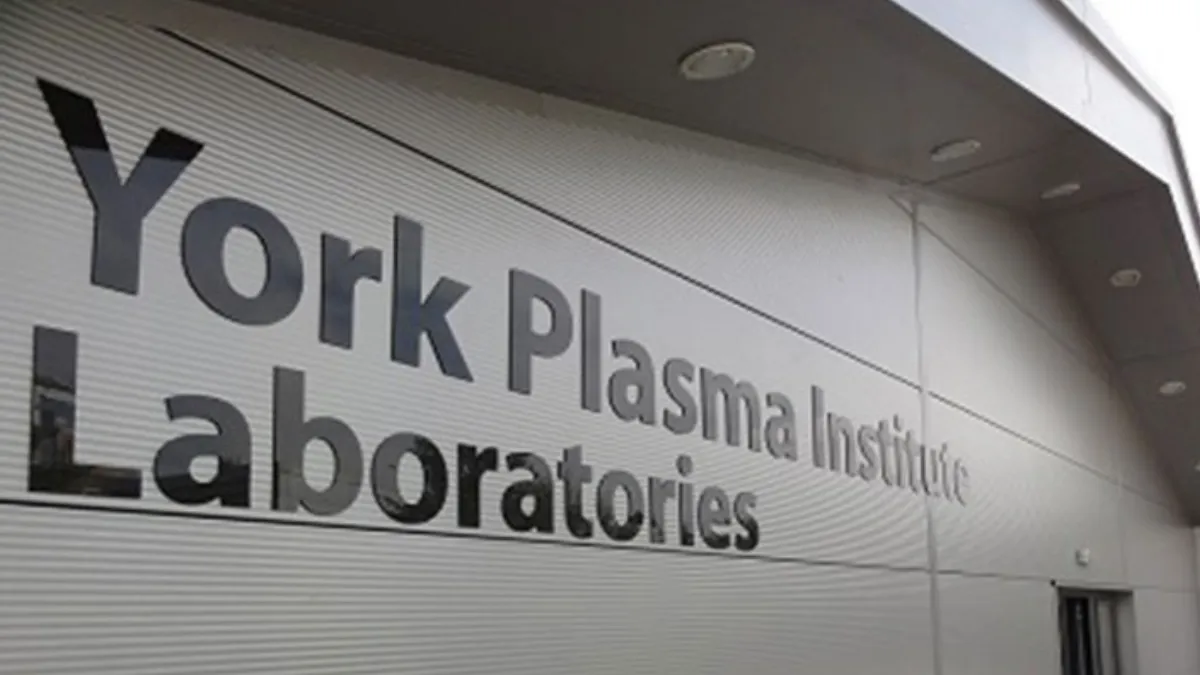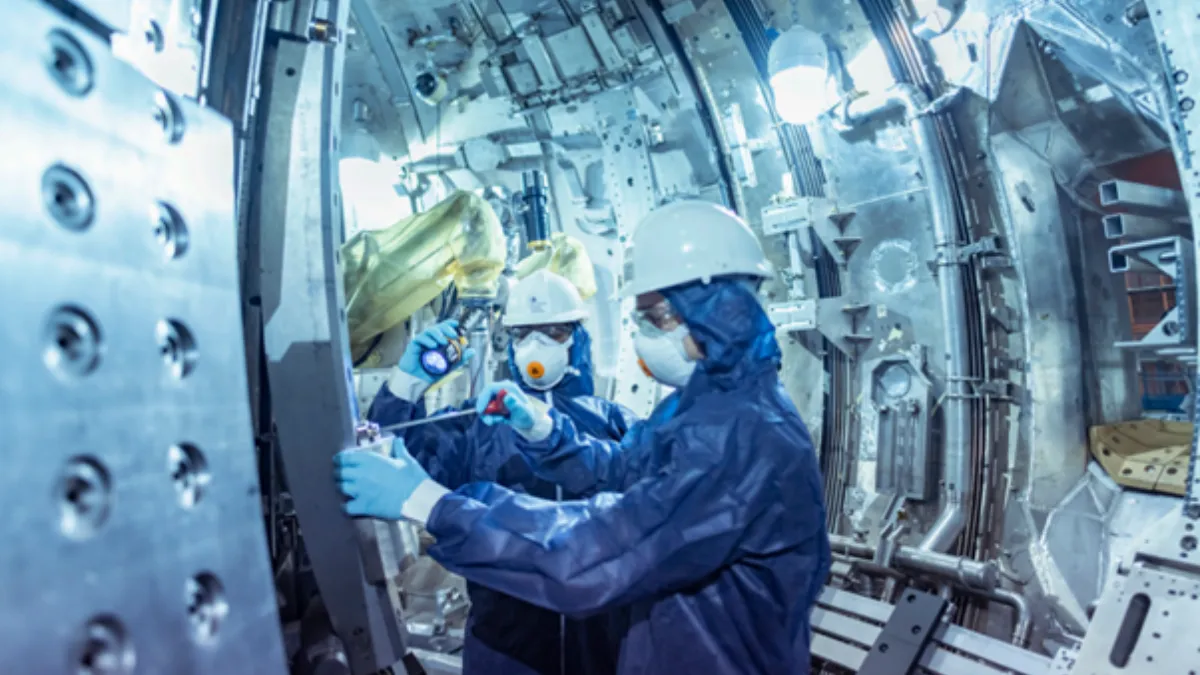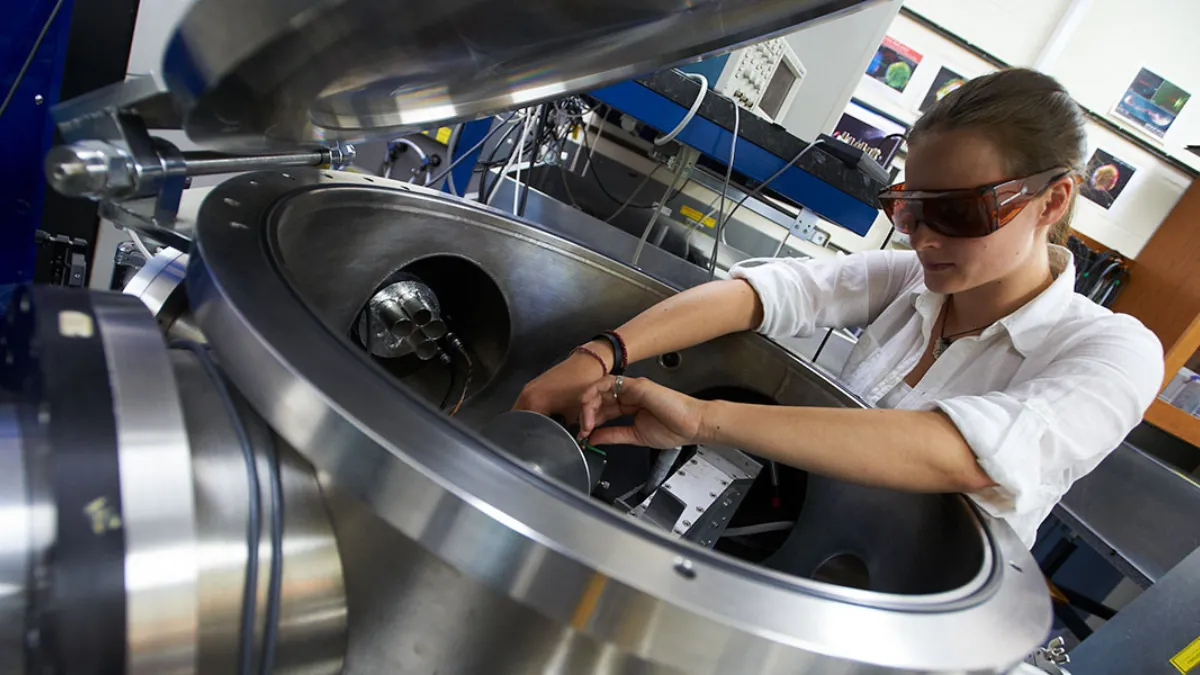Fusion Skills – Equipping the Workforce for Commercial Fusion
By Naomi Scott-Mearns
Last week, Melanie, the founder and CEO of Fusion Energy Insights, visited the York Plasma Institute to speak at the Fusion Frontiers and Interfaces Workshop. This was for PhD students from the Fusion CDT and Masters students from the University of York. Melanie was invited to speak about her career in fusion and her side projects on the Aurora and Mount Everest, with the intention to provide inspiration for the students’ future careers.
This inspired us to write about careers in fusion and about what is happening in the UK to make sure that the fusion industry has a pool of skilled people to work in the sector to realise commercial fusion.
So what is the UK doing to make its workforce ready for fusion?

York Plasma Institute Laboratories © York University
1. Upskilling the workforce is critical and so more training opportunities are needed
The fusion industry needs more people! Jobs in the fusion sector are going to increase and there are going to be more vacancies for particular skills so that commercial fusion can be achieved. But to fill these vacancies, there has to be a population of skilled people ready to take on these jobs and develop as the industry itself develops.
The Fusion Cluster Report from 2023 ‘Growing the Fusion Workforce: Challenges and Opportunities for the Future’
estimates that there are about 2,400 direct jobs in fusion in the UK currently, but this is set to increase significantly over the next two decades. The report recognises that recruitment can be difficult in fusion as deep, specific knowledge can be required to fulfil roles; therefore the report recommends focusing on “skills not job titles”, as this can help organisations plan how they can find people with the right skills. A focus on skills also opens-up roles for people with experience built-up elsewhere: “shifting the focus to skills rather than job roles, will allow fusion to draw from a wider range of potential recruits in other sectors” (p5).
The UK has identified fusion skills as a key growth space. Under the UK’s updated Fusion Strategy released in 2023, £55 million was made available for a Fusion Skills Programme to expand fusion training programmes to train more than 2,200 people over the next five years.

© The Fusion Cluster
The FOSTER Programme—Fusion Opportunities in Skills, Training, Education and Research—is a new initiative led by the UKAEA to further invest in a skilled workforce for the fusion industry.
Nick Walkden, the Head of Fusion Skills and FOSTER Programme Director, says: “Fusion is on an exciting journey of growth in both the public and private sector at the moment, with ambitious programmes focussing on fusion commercialisation. To fulfil those ambitions, we anticipate a need for between 2,000 and 3,000 newly trained individuals entering the fusion workforce in the next five years – a really exciting opportunity, but also a challenging demand to meet.
"To create a world-leading fusion skills ecosystem in the UK that can meet this challenge, we have set up a new programme, under a mandate from Government, called FOSTER (Fusion Opportunities in Skills, Training, Education, and Research) that is looking to both widen and deepen the pool of fusion skills in the UK whilst enhancing awareness of fusion as a career and creating a community amongst the next generation – the fusion generation who will bring fusion to the grid.”
2. Making everyone welcome in the fusion industry will help us grow the workforce
There is, unfortunately, a diversity issue in fusion. The Fusion Industry Association’s report ‘The Global Fusion Industry in 2023’ surveyed fusion energy companies and found that 77% of employees were male and 23% were female.
There is also a gender pay gap in fusion organisations. In the UK, all organisations with greater than 250 employees are required by law to publish their gender pay gap data. At UKAEA, in 2023 women’s mean hourly pay was 12.69% lower than men and women’s median hourly pay rate was 25.3% less than men. There are plans to eliminate the gender pay gap over time.
Alas this situation is not unusual and certainly not unique to fusion. The male/female stats from the FIA report are broadly similar to other scientific fields.
However, as The Fusion Cluster report says “as well as missing out on talent, the lack of representation across fusion is likely to further discourage potential applicants.” Therefore, there is a need to promote jobs for all in fusion and encourage a variety of people to apply to work in fusion.
For those needing inspiration, see our Women In Fusion articles.

A PhD student working in the laser laboratory © York Plasma Institute
3. Outreach work, tailored for different groups, is vital to spreading the word about fusion
While spreading the word about job opportunities in fusion is important, there needs to be a ‘back to basics’ approach spreading information on what fusion is.
Recent research in the US and published in the journal Fusion Science and Technology showed that less than half of the respondents to their survey had heard of fusion or knew what it was.
“There is a lack of knowledge about fusion energy across many external stakeholders such as parents, schools, local government and local communities – those who are outside the immediate bubble of fusion industry workers and investment community.” (p20 The Fusion Cluster report).
Setting up outreach programmes with schools and communities will help over the long-term to inform more people about fusion, its benefits and the opportunities that exist within the industry to work and learn. First Light Fusion, Tokamak Energy and UKAEA each have outreach programmes to local schools.
And finally…
The fusion industry is growing quickly and there is more investment – both public and private – than ever before. To fuel the growing industry and achieve the promise of commercial fusion energy, more skilled workers are needed. But with dedicated outreach work, education and tailored training opportunities this can be realised.
***
